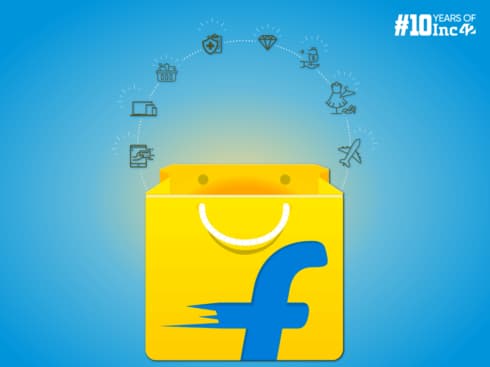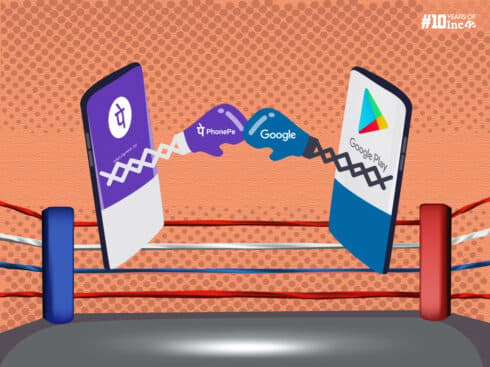New-age fulfilment centres have come up as traditional warehouses are no longer adequate for fast-moving digital retail, says Emiza’s Ajay Rao
Brands using fulfilment centres can expect a boost in efficiency, with 80% of the orders fulfilled within 12 hours and 100% within 24 hours, he adds
A multi-client, multi-functional fulfilment model can optimise capacity as per requirements and lower the cost of storage by optimising warehousing space
Hit the ground running, or get left behind — that’s the harsh reality of D2C today. In the era of quick commerce, a D2C brand’s success hinges on its ability to reach consumers quickly. To achieve this, brands must efficiently service the purchasing orders (POs) raised by quick commerce platforms, which offers them unmatched speed and convenience.
However, a single central warehouse might hinder this flexibility. This is where third-party logistics (3PL) players such as Emiza, WareIQ, Pickrr and others come in to provide multi-client warehousing and a slew of other tech-enabled innovative services, from order fulfilment to efficient distribution, hassle-free shipping, swift delivery and fast returns (outbound and inbound activities), effortless inventory management and more.
The aim is to ensure fast deliveries, provide 24×7 operational excellence at competitive costs and unveil a unique brand experience every time to wow customers. In doing so, these 3PL players are becoming more technologically adept and pushing the envelope by exploring the edge of automation, artificial intelligence, and machine learning (AI-ML).
India houses more than 5,100 active e–commerce startups and several industry incumbents, which will drive the growth momentum. According to Mordor Intelligence, the country’s ecommerce logistics market size, estimated at nearly $4 Bn in 2024, is expected to hit $7.2 Bn by 2029, growing at a CAGR of 12.7%.
How New-Age Warehouses Unlock Growth For Ecommerce
The proverbial ‘need for speed’ is just one piece of the logistics jigsaw. Too many supporting pieces such as fast order processing, suitable packaging and labelling, trace-and-track feature and ETA (expected time of arrival) accuracy are needed to make that model whole and achieve that grand mission.
The power of agility is the driving force behind the 3PL business. Here is a quick look at what 3PLs deliver.
Best-in-class operations: According to Emiza’s founder-CEO Ajay Rao, the new crop of fulfilment centres has emerged as traditional warehouses are no longer adequate for fast-moving digital retail.
“Brands today look for Grade A warehousing with superior infrastructure, dust-proof environment, advanced fire safety, flexible storage and robust security — complete with legal compliances. All these contribute to smooth operations and ensure speedy deliveries,” he said.
In contrast, Grade B (and C) facilities are older and may have larger stock areas but they are inadequate to meet the required demand
Rao emphasised the dynamic nature of modern warehouses doubling as fulfilment centres. “Traditional warehouses are designed for B2B bulk handling and long-term storage. On the other hand, new-age fulfilment centres can handle large B2B volume play, marketplace SOPs (standard operating procedures) for purchase order fulfilment and B2C deliveries requiring complex, multi-step processes.
“Whether it is kitting, labelling, gift-wrapping, quality checks, scheduling multiple pickups in a day, or seamless handling of inventory pools, ecommerce warehouses-cum-fulfilment centres carry out each task well. Traditional warehouses are not equipped for this level of process complexity,” he added.
As the need for fast delivery becomes increasingly important, new facilities are fulfilling it through distributed inventories by strategically placing goods near high-demand areas.
According to enterprise commerce firm ESW, improved distribution can greatly benefit online brands and increase their competitive edge by more than 85%.
In addition, modern warehouses provide flexible storage solutions as ecommerce companies require additional storage during festivities and seasonal sales. It is convenient to house one’s inventories where storage can be predicted, planned and scaled up or down, eliminating the difficulties of coping with space crunch or excesses.
Besides, automation capabilities such as cloud-based warehouse management systems (WMS), package tracking and inventory management lead to faster order fulfilment and fewer errors.
Fulfilment centres run by Emiza and its ilk also use state-of-the-art equipment such as free movement flooring (FM2) for better durability, electric dock doors and dock levellers for efficient loading and unloading, fire sprinklers and hydrant systems, and stringent physical and data security for uninterrupted operations 24×7, 365 days a year.
Emiza operates 27+ fulfilment centres in 14 Indian cities, including Delhi NCR, Mumbai, Kolkata, Chennai, Hyderabad, Bengaluru, Indore, Chandigarh, Lucknow, Patna, Guwahati and more. The 3PL startup has served more than 160+brands, including consumer goods giants like Cadbury, Cello and Milton and prominent startups such as Mamaearth, Snitch and The Souled Store.
Cost benefits due to multi-client model, techvantages: Often associated with higher costs, traditional warehousing offers little room for flexibility. In contrast, modern warehouses-cum-fulfilment centres have adopted a pay-as-you-go business model based on resource-sharing. Overheads reduce significantly when warehouses-cum-fulfilment centres reach economies of scale by servicing multiple clients using the same real estate, tech infrastructure and personnel.
Their capacity to shift storage as per requirements can lower the cost for ecommerce players and help avoid a fee hike during peak seasons. Overall, companies only pay for the storage and the services they use and leverage a transparent pricing structure, with convenient options like a fixed monthly charge or per-transaction fee.
All these can help ecommerce businesses optimise their logistics operations and cash in on cost advantages. Rao cited several impressive outcomes, showcasing the edge fulfilment centres hold over traditional warehouses. According to him, brands using fulfilment centres can expect a significant boost in efficiency, with 80% of the orders fulfilled within 12 hours and 100% within 24 hours. Additionally, returns are processed and restocked within 48 hours.
Choosing A Fulfilment Partner Can Make Or Break An Ecommerce Business
Selecting the right fulfilment provider could be challenging despite opportunities galore for logistics outsourcing. Ecommerce brands need to ask a few critical questions before making a decision. For instance, is the provider located near major demand hubs? Can it guarantee seamless integration between the WMS and the ecommerce platform for efficient fulfilment? Does it have a reliable reverse logistics system? Will it offer contract flexibility and service level agreements (SLAs) to meet performance expectations?
Players like Emiza offer these standard procedures for many sectors, including fashion & apparel, beauty & personal care, FMCG, electronic & electrical devices and more. When looking for a service provider, brands should also consider whether a 3PL player has relevant industry exposure.
Emiza’s fulfilment centres are equipped with temperature- and humidity-controlled storage (for consumables and delicate goods) and have a serialised inventory management system across categories.
It also uses multi-tier shelving to meet surges and seasonal peaks and leverage a WMS to streamline daily operations.
“We house 20-40 brands and employ 150 people on average in each warehouse. They are cross-trained across companies and categories to handle peak seasons effectively,” said Rao.
The 3PL startup claims to have developed a robust ‘return and refurbish’ policy, enabling brands to recover 8-12% of inventory- and marketplace claim-related losses due to RTOs.
In an earlier conversation with Inc42, Rao explained that Emiza conducts a rigorous quality check when a returned item arrives at its facility and scans it with a barcode scanner so that the brand concerned can quickly identify the product via the WMS. This helps speed up the processing time for sorting, reviewing and managing ecommerce returns.
Rao cited how Emiza’s processes and capabilities led to real-world business impact. A baby care brand partnered with the 3PL player in 2023 and scaled its presence from a single warehouse to 13 fulfilment centres in 18 months. It saw an 80% surge in order volume, while regional shipping jumped from 28% to 72%.
Again, a health and wellness brand partnered with Emiza, and within 6 months, its presence grew from one warehouse to five, with order volume increasing by 2X.
Retailing 4.0 To Thrive On Sustainable Growth; Can 3PL Players Like Emiza Help?
For brands, big and small, embracing latest technologies is no longer a choice but a lifeline to survive and prosper. But given the global headwinds and a harsh funding winter, sustainability remains highly important instead of cash-guzzling for growth at all costs. In this scenario, cost optimisation remains at the core of all business strategies and decision-making.
Therefore, brands defining the retailing 4.0 revolution must leverage tech, including AI and big data, automation and robotics. This is where multi-client fulfilment models adopted by the likes of Emiza become crucial for brands and their push for sustainability.
“When brands operate in a shared ecosystem, they will be immune to issues around labour and capacity availability to handle surges. Again, if a brand opts for multi-location warehousing, it can easily ensure business continuity if force majeure disrupts a specific area,” said Rao.
He added that AI-ML will be critical components for future-proofing brands. “These technologies will help manage inventories and enable smart inventory placement to improve picking efficiency. This will go deeper and redefine the future of logistics for ecommerce and brands,” he said.
The 3PL segment is surging, fed by the aggressive expansion of ecommerce across the country. Tech-enabled fulfilment centres will continue to pop up to meet the newfound demand for faster, more efficient deliveries. It has happened all over the US post-pandemic. And it is happening in India, too.
































 Ad-lite browsing experience
Ad-lite browsing experience